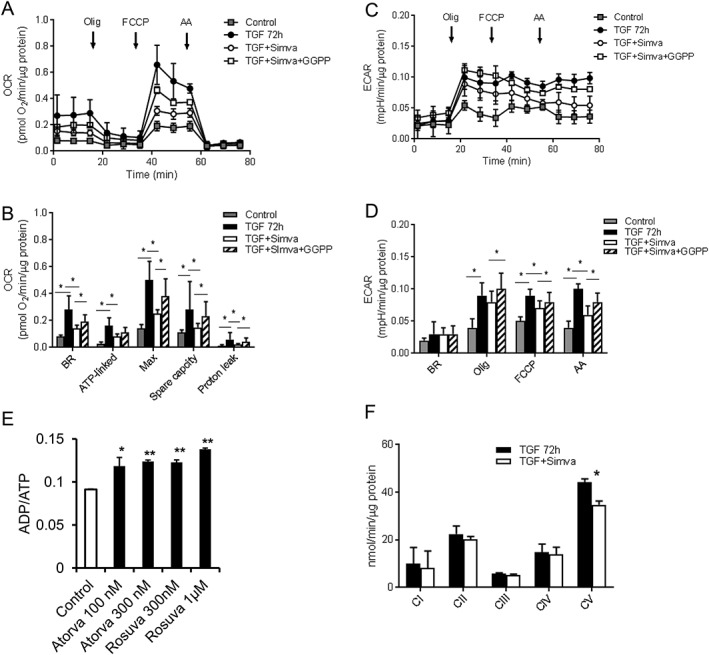Figure 3.

Effect of statins on cellular respiration. (A) Graphical representation of pooled data of cellular respiration (OCR) from Seahorse assays of hVFs in the control, differentiated (TGF), the simvastatin‐treated (TGF + Sim), and GGPP/simvastatin co‐administration (TGF + Sim + GGPP) groups. (B) Bar graphs depict that simvastatin reduced the ATP OCR, the proton leak‐linked OCR, and the maximal OCR without any significant effect on spare capacity OCR or non‐mitochondrial OCR. The inhibitory effect of simvastatin on the mitochondrial OCR was reversed by GGPP. (C) Graphical representation of pooled data of extracellular acidification rate (ECAR) from Seahorse assays of hVFs in all the three groups. (D) Simvastatin treatment of the differentiated hVFs (TGF + Sim) in vitro reduced ECAR, after addition of FCCP or AA. GGPP reversed ECAR to a similar level as control differentiated hVFs upon addition of FCCP and AA (TGF + Sim + GGPP); n = 6. Data are mean ± SD. (E) Bar graph depicting that both lipophilic atorvastatin (100 and 300 nmol/L) and hydrophilic rosuvastatin (300 nmol/L and 1 μmol/L) increased the ADP/ATP ratio. (F) Enzymatic activities of mitochondrial OXPHOS complexes in lysates from differentiated (TGF) and simvastatin‐treated hVFs showed significant reduction in Complex V activity by simvastatin (TGF + Simva). n = 3. Data are mean ± SEM. Atorva, atorvastatin; GGPP, geranylgeranyl pyrophosphate; Simva, simvastatin; Rosuva, rosuvastatin.
